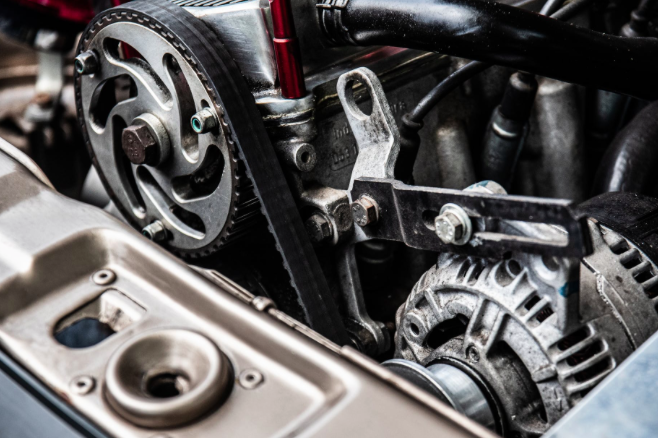
Most mass produced internal combustion engines (ICEs) in cars run on a 4 stroke system, with an intake stroke, a compression stroke, a combustion event which causes rapid expansion of the gases and a power stroke with the piston travelling at high speeds down a cylinder.
The piston is connected - predictably enough - to a connecting or con rod which drives a crankshaft. To smooth out the pulses, a flywheel is fitted behind the engine to act as a storage unit for the energy.
There is rotary design, but only Mazda have stuck with that and it has not become mainstream, mainly due to tip sealing reliability issues.
For years the actual combustion process was difficult to film, but modern materials mean it’s now possible, here’s a cool video of the process actually happening with different fuels. Definitely a don’t try this at home job.
In the mainstream, most vehicles use either petrol (aka gasoline) or diesel. Both these options are made of refined crude oil, but in fact there are many alternatives available, which we’ll discuss in a companion article next week.
For petrol, a spark is used to ignite the fuel/air mix, while with diesel it auto-ignites under the enormous temperatures and pressure of a higher compression ratio engine. This means diesel engines have to be more robust, usually resulting in a heavier engine. The reason why certain vehicles such as truck, bus and industrial vehicles like excavators use diesel is all down to the torque curve. Torque - a turning force at the crank shaft is measured by force x distance, often quoted Nm, so how many Newtons of force at one metre.
In petrol engines it peaks at higher revolutions per minute, great for a race car, no good for a dump truck.
What are the problems with internal combustion engines?
The fuel is mostly distilled from crude oil, a heavy hydrocarbon mixture locked up in the earth where it can’t do any harm. Once burnt in an engine, emissions are created in the exhaust. So the hydrogen is the fuel part, anchored to carbon to keep it liquid, with the other constituents being the nitrogen and oxygen in the air.
This creates several unwelcome problems. Perfect combustion is impossible so engines are inefficient from a thermodynamic perspective - much of the energy in the fuel is used to heat the thing up rather than power the vehicle along.
The exhaust emissions include carbon dioxide, carbon monoxide, oxides of nitrogen (Nox)and sooty particulate matter (PM). Sam Akehurst, Professor of Advanced Powertrain Systems, The Institute for Advanced Automotive Propulsion Systems (IAAPS) at The University of Bath in the West of England says, “Taking a mid-point between diesel and gasoline, a typical new engine would have a peak engine system brake thermal efficiency of around 42%. We expect that to increase to around 48% by 2025 and 53% by 2035, with Heavy Duty vehicles then up to 60%. Initially, this will be highly efficient, very dilute, low-temperature combustion and heat recovery, then potentially through new combustion cycles. NOx and PM will be essentially solved by 2025, regardless of fuel: with appropriate combustion management and aftertreatment, exhaust levels can be below the ambient levels found in most zero-emissions zones. (Full article here).
So improvements are coming. Akehurst continues, “The term ‘piston engine’ includes a lot of novel architectures, but they are all a decade or more from volume production. While researching the UK Government’s automotive technology roadmap, we were given compelling cases for many approaches, including split cycle concepts and linear piston generators. When ICE evolves to a point where it is the junior partner in an electrified powertrain system, it could be any of these or it could be rotary, or even something that has not yet been proposed. There are great synergies between electrification and ICE in hybrid vehicles. When the level of hybridisation is high enough, then the engine can be much more effectively optimised around a more constrained operating envelope.”
We’ll take a closer look at the alternatives for fuel as well as the case for EVs next week.

















